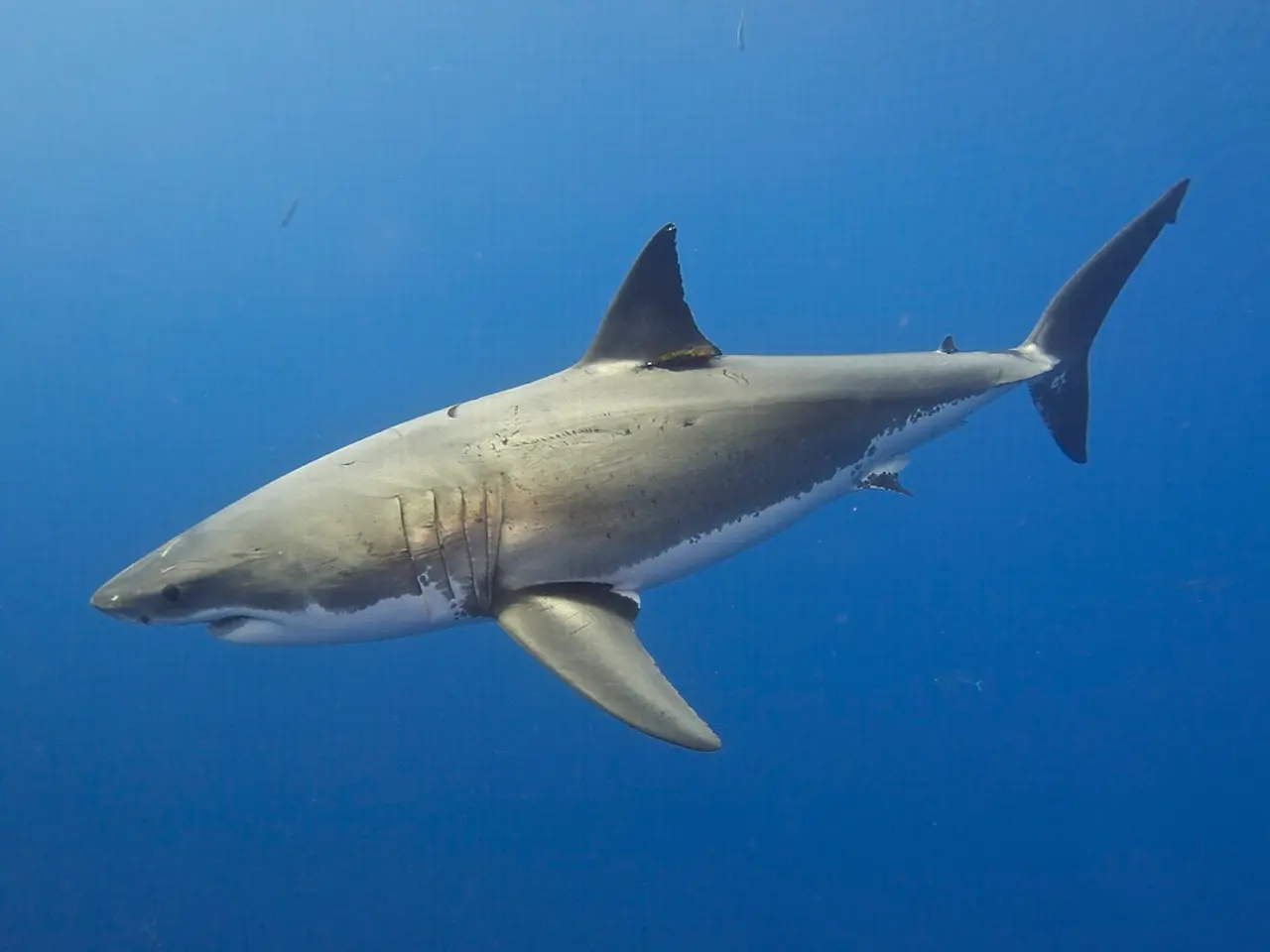Ancient shark species unearthed at Mammoth Cave National Park
A new ancient shark species, named Macadens olsoni, has been discovered at Mammoth Cave National Park in Kentucky. This significant find offers valuable insights into marine ecosystems from approximately 340 to 335 million years ago, during the Mississippian Period when the area was submerged under a warm, shallow sea[1][2][5].
The fossils of Macadens olsoni were found in the Ste. Genevieve Formation, a rich source of marine fossils such as crinoids and corals, indicating a diverse and thriving ancient marine environment[1]. The shark is notable for its unique curved row of teeth adapted for crushing small prey like mollusks and worms, suggesting specialized feeding strategies within ancient shark species that reflect ecological niches during that time. The shark was relatively small, growing to less than a foot in length[1][2][5].
This discovery expands the known diversity of ancient sharks in the region—more than 40 shark species and their relatives have been identified recently at Mammoth Cave—highlighting the cave’s importance as a paleontological resource. It emphasizes the critical role of national parks in preserving fossil records that connect past ecosystems to present knowledge and offer educational opportunities[1][2].
The name Macadens olsoni pays tribute to Mammoth Cave and Rickard Olson, a retired park scientist who played a crucial role in documenting shark fossils in the park. In addition to Macadens olsoni, researchers studied another ancient shark, Helodus coxanus, now renamed Rotuladens, meaning "Wheel Tooth."
Every discovery at Mammoth Cave connects the past with the present, offering invaluable educational opportunities for students and the public[3]. The findings from this research enhance our knowledge of ancient marine ecosystems and underscore the importance of ongoing paleontological research in protected areas for uncovering prehistoric life and informing evolutionary history[1][2][5].
[1] National Park Service. (2022). Mammoth Cave National Park. Retrieved from https://www.nps.gov/maca/index.htm
[2] Smithsonian Institution. (2022). Smithsonian Paleobiology Department. Retrieved from https://paleobiology.si.edu/
[3] National Park Service. (2022). Education and Learning. Retrieved from https://www.nps.gov/subjects/education/index.htm
[4] Mammoth Cave National Park Research. (2022). Retrieved from https://www.nps.gov/maca/learn/nature/research.htm
[5] Smithsonian Institution. (2022). Mississippian Period. Retrieved from https://paleobiology.si.edu/encyclopedia/mississippian_period
- This discovery in environmental-science, particularly in the field of paleontology, is a testament to the wealth of knowledge that can be gained from studying science and its applications.
- The rich variety of fossils found in the home-and-garden-like habitat of Mammoth Cave serves as a tangible proof of the diversity of life in the past, thus enriching our understanding of the history of science and technology.
- As we continue to unravel the secrets of space-and-astronomy, it's equally important to understand our own planet's history, as demonstrated by the finding of the ancient shark Macadens olsoni.
- The lifestyle of ancient marine species, as depicted by the fossil records, offers insights into the adaptations that have shaped various life forms, a crucial component in the study of biological sciences.




